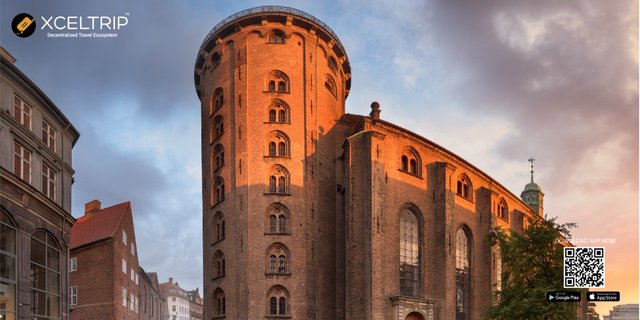
With its distinctive spiral ramp, the Round Tower is one of Denmark’s best-known and most visited structures. A historical place that also houses exhibitions, concerts and activities for young and old.
When Christian IV built the tower, Denmark was quite famous for its astronomical achievements thanks to the astronomer Tycho Brahe. When he died in 1601, the King wished to continue Brahe’s research, and thus the round tower came into being.
It has been a while since the scientists left, but the observatory is still used by amateur astronomers and the many visitors. The observatory is encircled by an outdoor platform from which you have a magnificent view of the old part of Copenhagen.
To get there you need to walk up the spiral walk, which is 268,5 meters long at the outer wall and only 85,5 meters long close to the core of the building. This means that you walk around 209 meters to get to the top even though the tower is only 36 meters tall.
The 17th-century tower and observatory Rundetaarn, or The Round Tower, is the oldest functioning observatory in Europe. It was built as a platform for the university observatory and for centuries it was the centre of Danish astronomy. The foundation stone was laid on 7/7 1637 and five years later the Round Tower was finished as the first part of the Trinity Complex, which was designed to accommodate three things: the observatory at the top of the tower, the university library above the Trinity Church and the church itself below.
The Round Tower is built by King Christian IV, who constructed its round walls in the royal colours yellow and red. To get to the top, one needs to walk up the spiral walk, which is 268,5 meters long at the outer wall and only 85,5 meters long close to the core of the building. The core is hollow and you can step inside one of the open niches and stand on a glass floor, hovering 25 meters above the ground. The glass is more than 50 mm thick and can carry up to 900 kg per square meter.
Halfway up the tower you will find the old Library Hall, that once housed the entire book collection of the university, but has been a venue for exhibitions, concerts and cultural events since its reopening in 1987.
The tower platform on top has a great 360 degrees city view centred by the observatory, which is still used in the winter months and is thus the oldest functioning observatory in Europe.
Book hotel and flight with Crypto and make your Travel to Denmark culture unforgettable with XcelTrip!